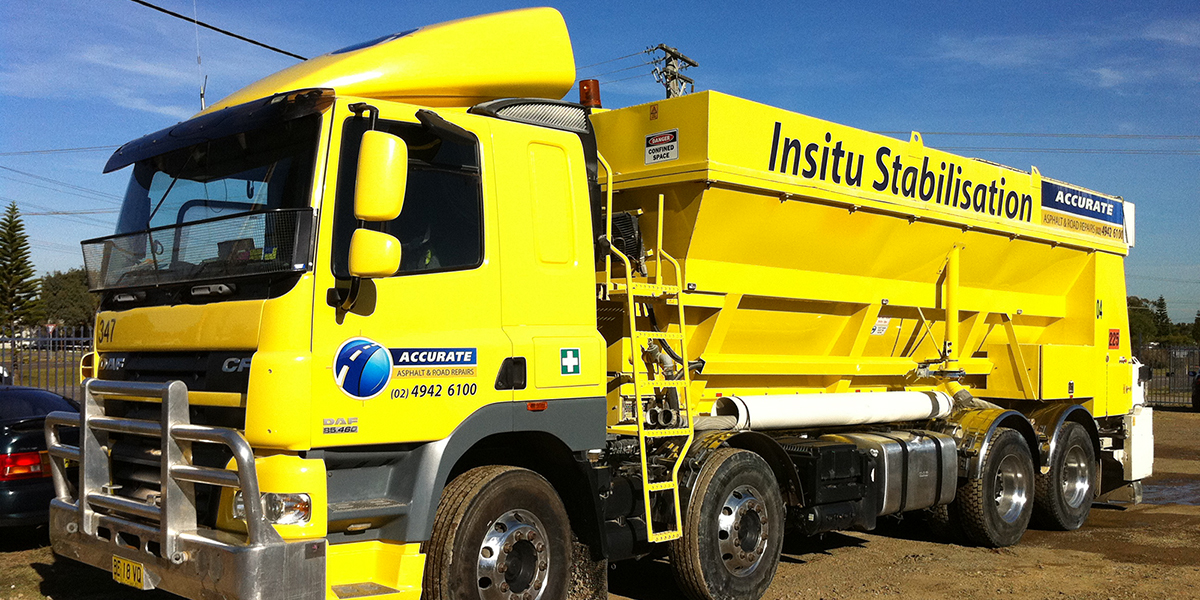At Accurate Asphalt, the combination of our experience, engineering skills and range of plant and equipment enables us to be a prominent provider of complete in-situ stabilisation services throughout New South Wales.
Built on the principals of excellence, professionalism, organisation and safety, Accurate has earned a reputation for delivering on time and on budget while complying with industry best practices in environmental management and OH&S standards.
We pride ourselves on customer satisfaction and clear, accurate communication. Our aim is to provide you with the best service that you have experienced in the industry.
In situ stabilisation is a popular method of road pavement rehabilitation. It is usually more economical to recycle and improve the quality of in situ materials within an existing pavement rather than importing better quality virgin material.
Social Benefits
Rehabilitation by in-situ stabilisation is usually much quicker than other alternatives since there is in effect no excavation and minimal materials to be taken away from site and consequently brought onto site. Also the risk of poor weather causing extended delays will be far less as the materials are being recycled in place. There are also significant cost advantages compared to alternative methods because of the speed and lack of disruption of in-situ stabilisation and recognition should be given to the direct operational costs.
The loss of road lanes for periods of time is a definite cost to the community and this cost should be evaluated in dollar terms and taken into account with the direct and other costs in the assessment of the most appropriate rehabilitation solution.
Rehabilitation using in-situ stabilisation techniques commonly offer savings of 20% and in some cases even greater than 40% compared to reconstruction alternatives.
Environmental Benefits
Since the recycling of existing pavements using in-situ stabilisation is quick, involves no excavation and requires either no, or minimal removal of materials off site and consequently into the site, the environmental benefits of using these techniques in comparison to using other rehabilitation procedures are quite substantial.
The fundamental nature of using in-situ stabilisation techniques in the rehabilitation of distressed pavements is to recycle or rehabilitate the existing road in-situ, thereby upgrading the engineering and economic values of existing pavement.
By recycling the existing pavement materials, which still have a useful percentage of their original asset value, in-situ stabilisation techniques have advantages over other rehabilitation alternatives. Recycling old pavements is a sustainable process in terms of the overall environment compared with the digging out and disposal of the existing materials that still have some value and replacing them with new quarried and processed materials. When combined with by products such as fly ash and/or slag in the blended cementitious products to recycle the existing pavements, there is even more benefit in terms of the environment and this is a 'win/win' situation.
Australian Stabilisation Industry Association - AustStab (2007) – (http://www.auststab.com.au) Recognition of sustainability by using stabilisation in road rehabilitation Smith & Vorobieff, ASA Sustainability & Slag Conference, Sydney, May 2007.
Since the recycling of existing pavements using in-situ stabilisation is quick, involves no excavation and requires either no, or minimal removal of materials off site and consequently into the site, the environmental benefits of using these techniques in comparison to using other rehabilitation procedures are quite substantial.

